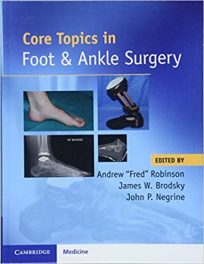Author: Alan S. Whiteman, PhD, Jerry Hermanson, MBA and Dennis Falkon, PhD
Publisher: Greenbranch Publishing – 149 pages
Book Review by: Nano Khilnani
This is a compact book on the accounting and general business aspects of physician practices, whether they are solo or group operations. Consisting of 10 chapters, this book applies to both existing physician practices and new ones being formed.
It was written by three people with backgrounds in health administration.
Dr. Alan Whiteman is an associate dean for health sciences and professor of graduate health administration studies at Barry University in Miami Shores, Florida. He has 35 years of experience in all facets of the healthcare industry.
Jerry Hermanson is CEO of Health Integration Consultants, a Florida-based healthcare solutions company. He has 27 years of experience in healthcare and provides services to hospitals, physicians and medical societies.
Dr. Dennis Palkon is a full professor and past chairman of Health Administration at Florida University in Boca Raton. He is executive editor of Hospital Topics and serves on numerous editorial boards.
If you and your physician partners are working in a running practice, this book will help you and-or your office manager identify areas of immediate savings as well as additional cost-cutting opportunities in other areas of your operation as you compare each expense category over the last several years and discover why in some years those expenses were higher or lower.
An entire chapter is devoted to working smarter, not harder. It helps you transform your heavy-workload office bogged down with cumbersome paperwork with much demand on your time, to a streamlined operation with everything under control.
This book also helps you compare your office expenses with those of other similar-size practices in the same specialty in your own geographical area and those in other parts of the country. Known as benchmarking, the book provides you many sources of comparative data so you and your business manager can see the differences and take the necessary steps to lower your costs.
If you’re starting a new practice, this book can help you decide which would work better for you: a solo practice, with partners, or one with shared space only. Whatever organizational structure you decide upon, the book can help you (and your medical associates) set up a prudent, stable, predictable, reasonable-cost operation.
It will help you make the big decisions such as purchasing a medical facility or just office space; hiring quality staff members at an affordable cost; buying lab, medical and office supplies yourself or through a buyers’ cooperative at the lowest prices possible; deciding which equipment to buy, from large machines to small communication devices; and more.
In this book you learn to understand the economies of scale in occupancy, staffing, utilities and supplies costs whether you have partners or associates just sharing space; and other methods to contain costs.
It is not just cutting costs that are important to practitioners. It is also increasing revenue. A chapter on patient satisfaction helps you answer the question as to how you’re doing and if most of your patients are happy with you.
The book provides helpful information in 20 pages of Appendices. It provides lists of: leading healthcare IT companies; an evaluation form to use when selecting a physician practice management system; a list of organizations that certify office professionals; and a list of books dealing with the subject of patient satisfaction.
This is a useful book that provides to doctors and managers of physician practices the ways and means of organizing their businesses, putting in place the right accounting systems and checking areas of potential savings for the purpose of running an efficient, cost-effective operation.






